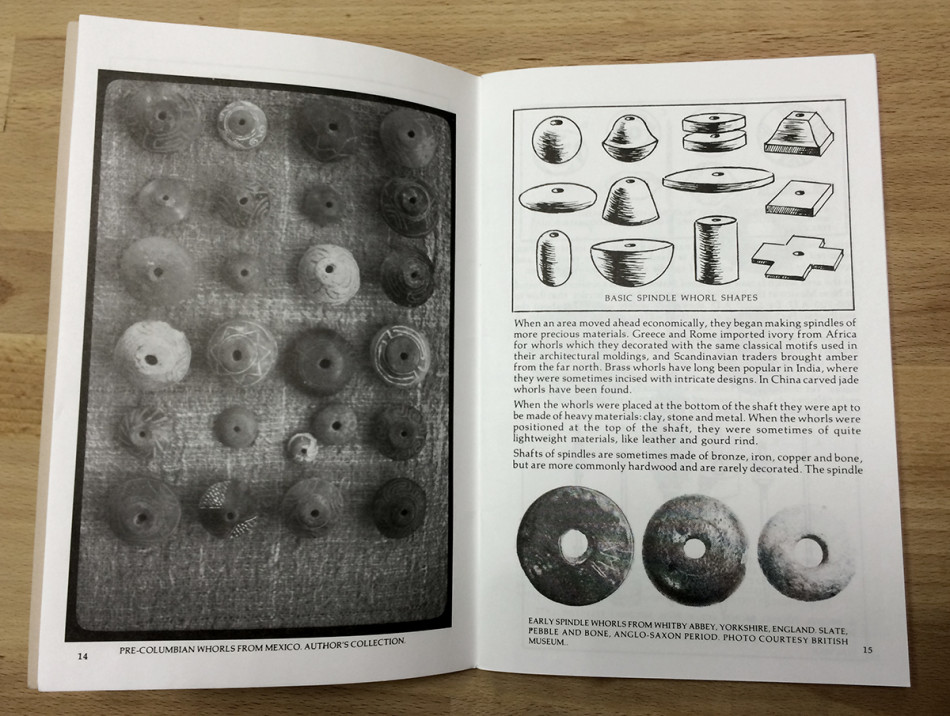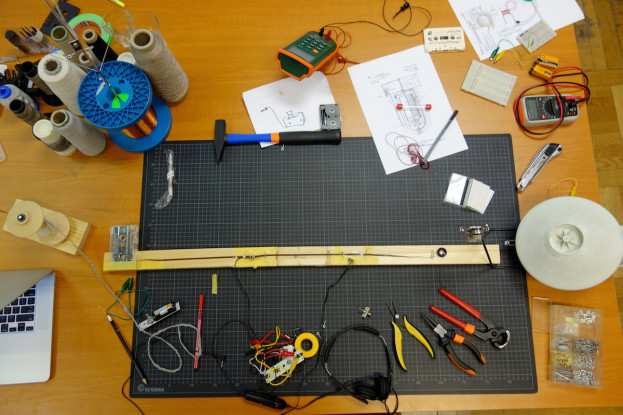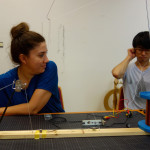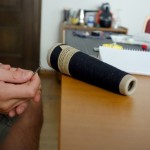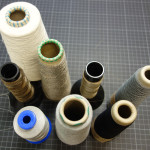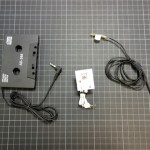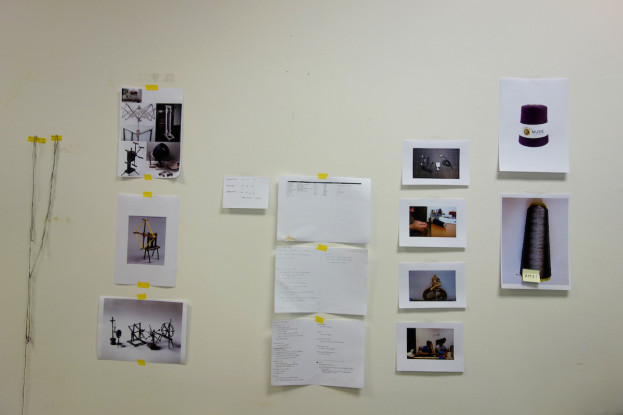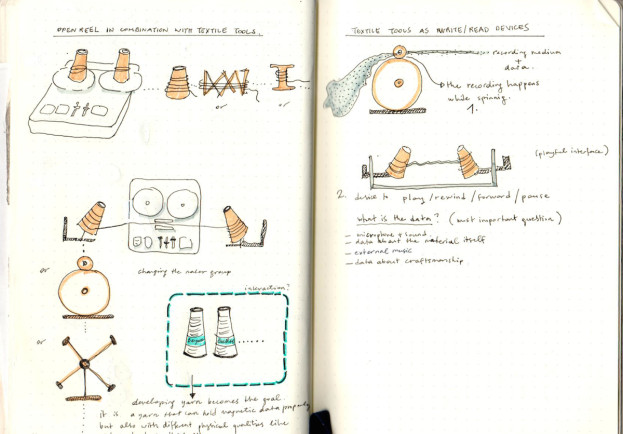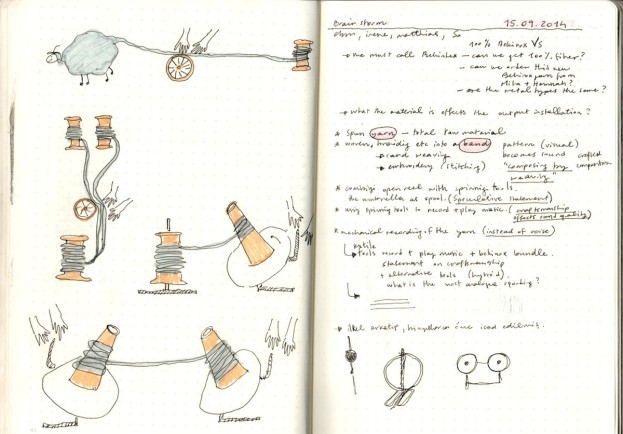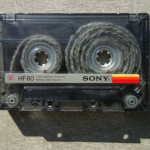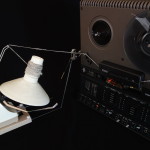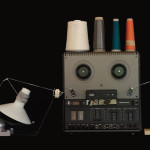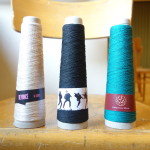The Stitching Worlds team invited media artist So Kanno for a two weeks intensive workshop in their studio. The workshop set-up is basically a test environment. It brings four experts with different background knowledge and experience into a specially equipped studio environment for a certain amount of time. This set-up is expected to be an incubator for exploring a shared topic of interest intensively, making progress in technical experiments, inspiring new ideas, formulating new research questions, and gaining experience in ways of collaboration and dialogue with an external fellow artist.
This workshop is dedicated to the exploration of fibers and textiles as an alternative medium to store data. Textiles have been a natural medium for storing and communicating social and cultural data over centuries, as in the ancient Quipu, or of symbolic nature in traditional patterns in clothing. There are, moreover, visible influences of textiles and their production technologies on historical computer data storage media, as in punch-cards and magnetic core memory. The string per se is the archetype of all linear fiber elements such as wires, cords, cables, and optical transmission lines. The spinning whorl, on the other hand, led the human imagination to discover the wheel and eventually all rotating mechanisms that are dominant in today’s high end manufacturing processes.
This experiment focuses on the similarities between the processes of spinning in textiles and in magnetic data writing and reading systems. Spinning yarn is the oldest textile technology and undoubtedly the archetype of all winding processes. We creatively explore if and how original spinning tools, techniques and processes can be (or, could have been) used as ways to magnetize materials to store data. The technical experiment is accompanied by speculation towards possible objects that such techniques would generate (or, could have generated).
Fiber crafts were a huge economic force in pre-industrial societies. Today they are seen as old-fashioned hobby activities and undervalued both culturally and economically. This project takes the absolute oldest human craft, spinning, and places it in a relatively newer technological context, magnetic data recording. The intention is speculative. What if magnetic recording had not only been inspired by spinning but also directly emerged from it? What if the first sound recordings were made on yarn by skilled women?
Spinning wheel and materials to make hand spun yarns; plying yarn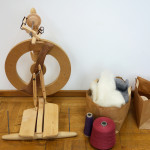
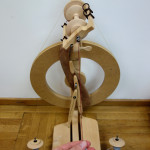
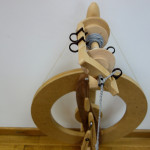
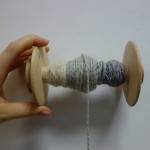
The setup and experiments start with material research to get an overview about existing and historic possibilities to magnetically store informations on materials in diverse shapes. As we are approaching the topic from a perspective that puts textile crafts at the center, the origin and making of the data recording is of specific interest. Material properties the storage medium needs to comply with are also connected with its way of making, how the traces of the craft process it originates from are inscribed in it and influence recording or replaying results.
To test the setups and material experiments we used an oscilloscope as measuring device to display abstract signal data of the information stored and read on the yarn, and an audio setup that would allow us to compare the results of textile material to the materials commercially available today. Obviously, commercial devices are not built to replay from spun yarn. So whereas we could get results, the setup is not yet optimised for the material we actually aim at using.
Test setup nr. 2, measuring the recording and output, reading individual signals 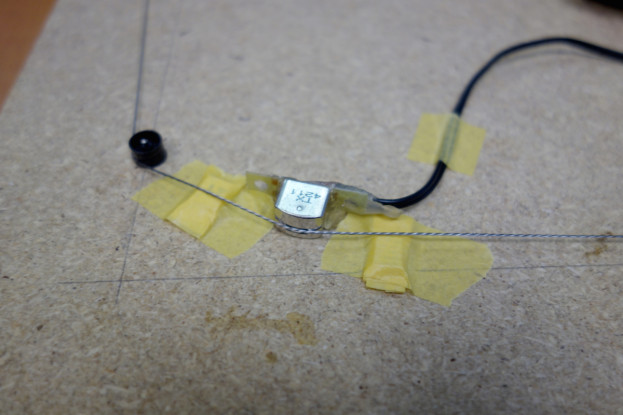
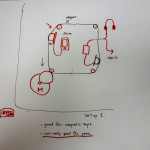
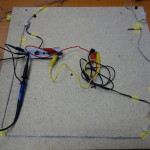
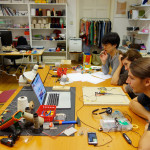
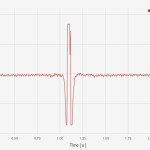
Open reel player with textile information carriers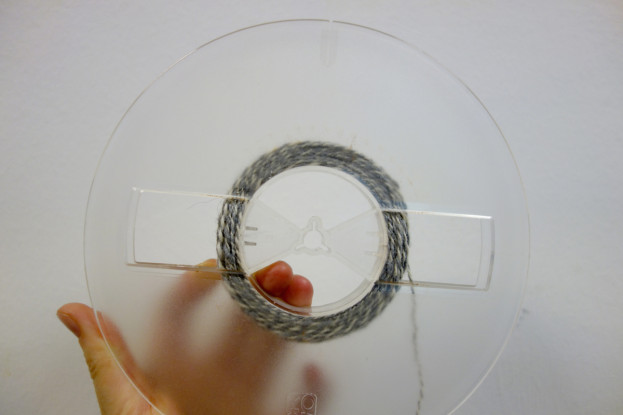
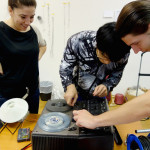
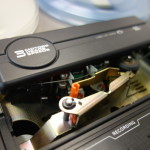
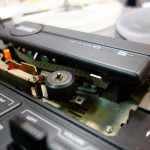
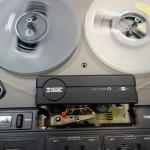
We could store and play music data and read out digital data on hand spun yarns, what serves as first proof of concepts. Still, a lot of questions are open. How can information be crafted, and how would the craft routine influence its specifics? What are the qualities that define good craftsmanship when crafting data? What would machine and the handling of the material look like if we would deal with textile storage media on a large scale? These are just some of the thoughts open for deeper discussion, but preliminary results pave the way for further conceptual and technical explorations.
